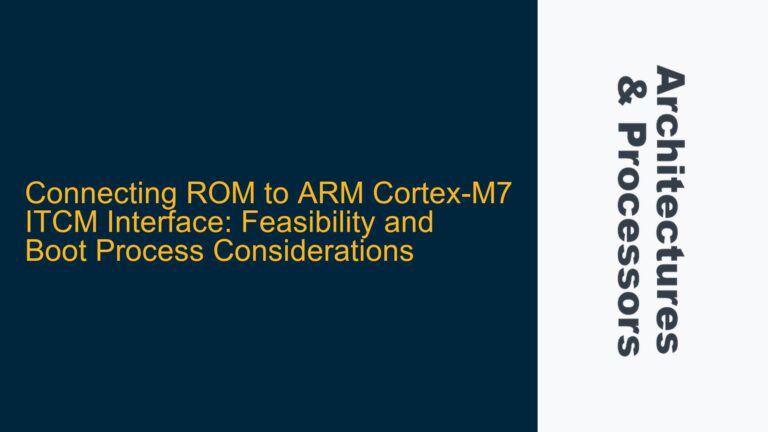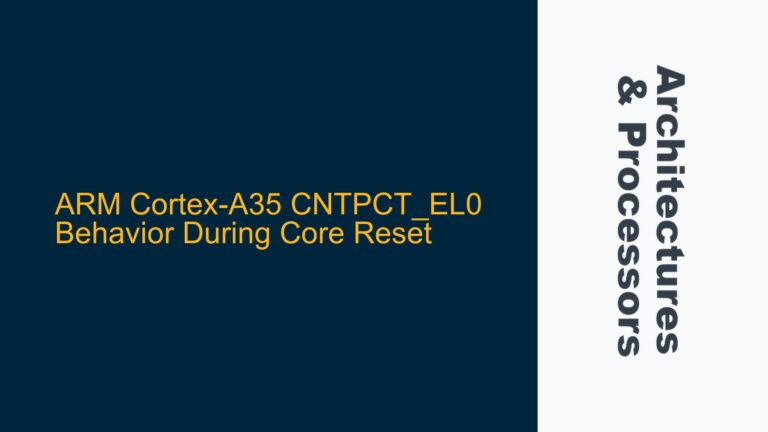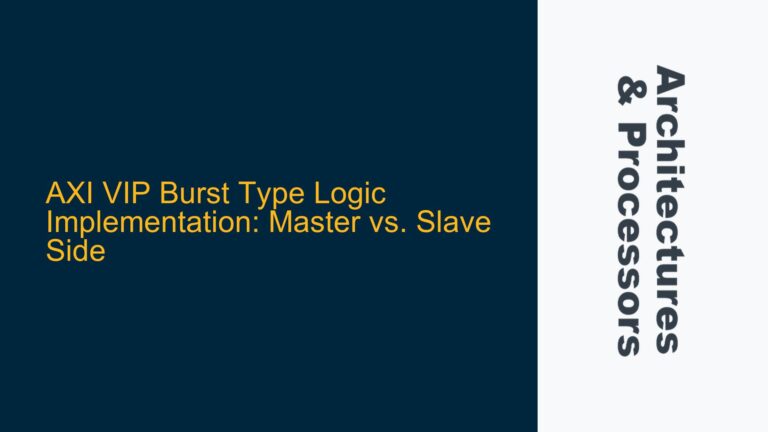ARM Cortex-M Stack Pointer Initialization in Reset_Handler
The initialization of the stack pointer (SP) in ARM Cortex-M microcontrollers, such as the STM32 series, is a critical step in the boot process. The stack pointer is typically set in the Reset_Handler function within the startup file (e.g., startup_stm32f446xx.s). This initialization is done using the instruction ldr sp, =_estack, where _estack is a symbol representing the top of the stack memory region. At first glance, this might seem redundant because the ARM Cortex-M architecture automatically loads the stack pointer from the first entry in the vector table during the boot sequence. However, this explicit initialization serves several important purposes, particularly in the context of debugging and defensive programming.
The vector table for ARM Cortex-M processors is structured such that the first entry is the initial value of the stack pointer, followed by the reset vector (the address of the Reset_Handler). During the boot process, the processor hardware automatically loads the stack pointer from the first entry in the vector table. This means that by the time the Reset_Handler is executed, the stack pointer should already be correctly initialized. However, the explicit initialization of the stack pointer in the Reset_Handler is not redundant; it is a deliberate design choice to ensure robustness, especially in scenarios where the processor might not be in a clean state, such as during debugging sessions or after a soft reset.
Debugging Scenarios and Defensive Programming
One of the primary reasons for explicitly setting the stack pointer in the Reset_Handler is to account for debugging scenarios. When using a debugger, it is possible to manually set the program counter (PC) to the reset entry point without going through the normal boot sequence. In such cases, the stack pointer might not be initialized correctly, leading to undefined behavior or crashes. By explicitly setting the stack pointer in the Reset_Handler, the firmware ensures that the stack pointer is always correctly initialized, regardless of how the processor entered the reset handler.
Defensive programming is another key consideration. In embedded systems, it is crucial to handle unexpected conditions gracefully. Explicitly initializing the stack pointer in the Reset_Handler is a form of defensive programming that guards against potential issues arising from incomplete or incorrect hardware initialization. This practice is particularly important in safety-critical applications where the system must recover gracefully from unexpected states.
Ensuring Consistent Stack Pointer Initialization Across All Conditions
To ensure consistent stack pointer initialization across all conditions, the following steps should be taken:
-
Vector Table Configuration: Ensure that the vector table is correctly configured with the initial stack pointer value at the first entry. This value should point to the top of the stack memory region, typically defined by the linker script. For example, in the STM32 startup file, the vector table might look like this:
.section .isr_vector,"a",%progbits .type g_pfnVectors, %object g_pfnVectors: .word _estack .word Reset_Handler .word NMI_Handler .word HardFault_Handler ...Here,
_estackis the symbol representing the top of the stack, and it is placed at the first entry in the vector table. -
Explicit Stack Pointer Initialization in Reset_Handler: Even though the stack pointer is automatically loaded from the vector table during the boot process, explicitly set it again in the
Reset_Handlerto ensure robustness. This can be done using the following assembly instruction:Reset_Handler: ldr sp, =_estack // Explicitly set the stack pointer ...This step ensures that the stack pointer is correctly initialized even if the processor enters the reset handler through an unconventional path, such as during debugging.
-
Linker Script Configuration: The linker script should define the
_estacksymbol to point to the top of the stack memory region. This is typically done by assigning the end of the RAM region to_estack. For example:MEMORY { RAM (xrw) : ORIGIN = 0x20000000, LENGTH = 128K } _estack = ORIGIN(RAM) + LENGTH(RAM);This ensures that the stack pointer is initialized to the correct address, regardless of the memory layout.
-
Debugging Considerations: When debugging, ensure that the debugger is configured to correctly initialize the stack pointer if the processor is manually reset or if the program counter is set to the reset handler. Some debuggers might not automatically initialize the stack pointer, leading to potential issues. Explicitly setting the stack pointer in the
Reset_Handlermitigates this risk. -
Handling Soft Resets: In some systems, a soft reset might not reinitialize the stack pointer. In such cases, explicitly setting the stack pointer in the
Reset_Handlerensures that the stack is correctly initialized after a soft reset. This is particularly important in systems that use watchdog timers or other mechanisms that can trigger a soft reset. -
Stack Overflow Protection: In addition to initializing the stack pointer, consider implementing stack overflow protection mechanisms. This can be done by placing a guard region at the end of the stack and checking for stack overflow during runtime. For example:
#define STACK_GUARD_SIZE 64 uint32_t stack_guard[STACK_GUARD_SIZE] = {0}; void check_stack_overflow() { for (int i = 0; i < STACK_GUARD_SIZE; i++) { if (stack_guard[i] != 0) { // Handle stack overflow } } }This approach helps detect stack overflows early, preventing memory corruption and system crashes.
By following these steps, you can ensure that the stack pointer is consistently and correctly initialized across all conditions, including normal boot, debugging, and soft resets. This approach not only enhances the robustness of the system but also simplifies debugging and reduces the risk of stack-related issues in embedded applications.
In conclusion, the explicit initialization of the stack pointer in the Reset_Handler is a best practice in ARM Cortex-M programming. It addresses potential issues arising from debugging, soft resets, and incomplete hardware initialization, ensuring that the system operates reliably under all conditions. By understanding the underlying reasons for this practice and implementing the necessary steps, you can build more robust and reliable embedded systems.






